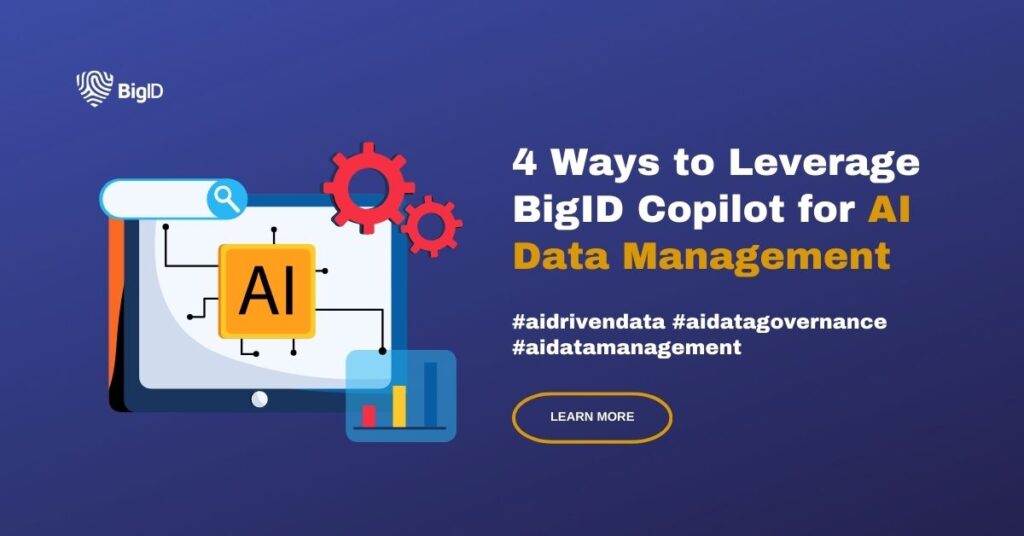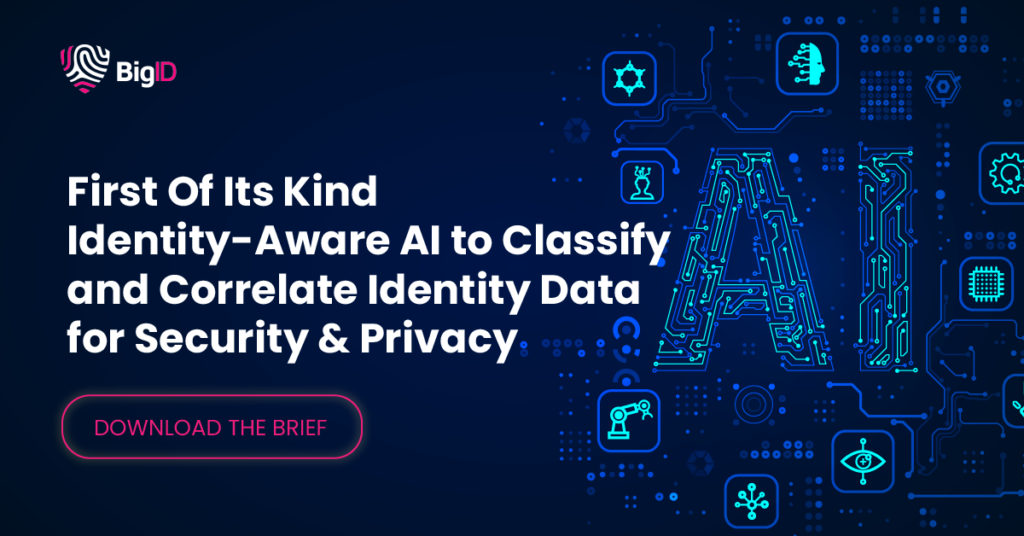4 Ways to Leverage BigID Copilot for AI Data Management

Organizations are generating data at an exponentially higher speed than ever before. If you’re a C-suite executive in Privacy, Security or Data, it is increasingly important to have a fundamental understanding of the data that is in your organization. It starts with the initial intake of labeling the data for the proper business context. This activity is used to set up access controls, privacy sensitivity levels, business data domain, decision-making reporting and more.
What is a data label?
A data label can be a business term, a data product name for a grouping of data elements or processes, or even a label that describes the ownership in a business domain. Organizations can apply finer grained data labels to identify risk levels, access levels, security levels, and privacy settings.
Today data labeling is a manual and time-intentional process that is owned by the data management team and usually conducted by a Data Steward. It may be marked down in a standalone business catalog that is not integrated with any business applications or governance reporting compliance (GRC) tool. Data labeling by privacy and security teams are repeatedly applied again in other systems and usually downstream from the initial collection of the data. As a result, companies have duplicate ways of data labeling in multiple systems along with inconsistent methodologies – leading to potential conflicts.
Given the scale and size of data, data labeling is the ideal data management activity for AI! In fact, this is the quickest time-to-value investment that you can make in your organization. By using AI to automatically find and match your data to business terms, data domains and pre-existing labels, the Data Steward will have a distinct advantage on coverage and accuracy of the data labeling. Their role will shift from matching and labeling data to validating anomalies and approving labels in bulk. This is a dramatic improvement and time savings for your data teams. Data labeling demonstrates that AI plus humans in the loop can improve efficiencies and drive better business value.
Use solutions like BigID AI Copilot to quickly understand your structured and unstructured data sources and apply data labels on all your critical business-driven data. BigID AI Copilot can help to standardize your data label logic across all your business, privacy and security stakeholders so that there is no conflicting information. In fact, BigID can apply the labels directly at the source – essentially at the very beginning of the business process – so that all downstream users and applications are fully informed of the business context and usage. You will no longer have to worry about incomplete business tagging because AI Copilot will be there to fill in the missing gaps.

Here are 4 ways that the BigID AI Copilot can accelerate the data management activities for your Data Stewards today! There is no smarter AI-assisted tool that can help your data analysts, data engineers, data quality teams and AI teams understand the proper data sources and features for their jobs today.
1. Find all the data that is related to business terms and attributes.
BigID AI Copilot can help detect similar tables assigned to a business term or attribute. By using unsupervised learning, AI Copilot can cluster similar tables together to identify new data sources for additional data labeling. This new capability identifies new tables that were previously known, therefore improves the coverage of data labels and ensures a higher level of accuracy for usage in reporting and analytics.
2. Get recommendations for data mappings.
Oftentimes organizations are challenged with building out the lineage of their data from their business catalog. They know the business concepts but the underlying data source is unknown. That is the top down view of the problem that executives use to measure progress in their data maturity. BigID AI Copilot can take a bottoms up approach to help solve this problem. By learning from the data team’s initial data mappings, AI Copilot can recommend additional tables for data source mapping. In addition, when there is no defined business term assignment, AI Copilot can infer key business attributes and suggest these as mappings.
3. Automated Domain mappings with owners.
The uncertainties in data ownership lies in the failure to assign the proper business domain. Workflows fail to start because the owner is not assigned or the incorrect owner was assigned. The BigID AI Copilot can help with understanding the right context of the data and at-scale assign it to the proper business domain. Once the data domain is assigned to the right Data Steward, s/he can help to validate the mappings and ensure the review workflows are working properly. Otherwise what happens today are workflows that fail to execute because of unknown owners.
4. Use Generative AI to create table descriptions.
The contents inside structured tables are often a mystery outside of your Information Technology (IT) team. Without scrutinizing the data content, it is difficult to understand how the tables are used and what the proper business context is for each individual table. The reason is because technology teams do not provide a description of the structured tables. As a result, your Data Stewards spend time working with their IT counterparts to understand the information in each table. By using BigID AI Copilot’s Natural Language Processing, a brief generation is generated based on the surrounding context, characteristics and physical connections.
As with any Artificial Intelligence app, it helps to enhance the user experience and enable accelerated time-to-value for data management activities. By using BigID Data AI Copilot, customers can quickly and accurately apply data labels to all their data. This is the first step to maturing your data for AI, privacy and security protection. Proper labeling for business context, usage, owners, risk levels and more is imperative in your data foundation. Controls, policy usage, remediation and retention activities can be automatically instantiated with data labels. Now the only question left is, what more can you do if all your data was properly labeled? The BigID AI Copilot makes it possible.













